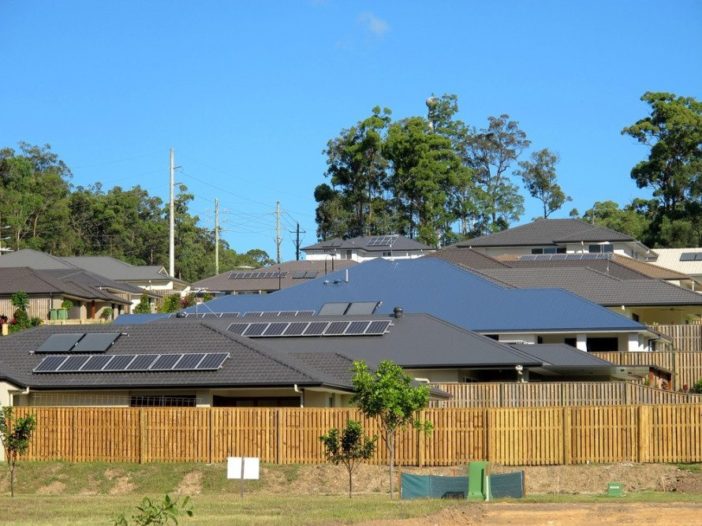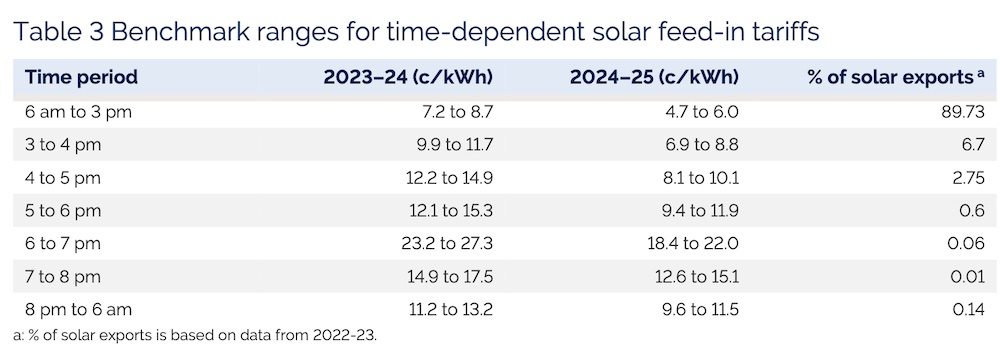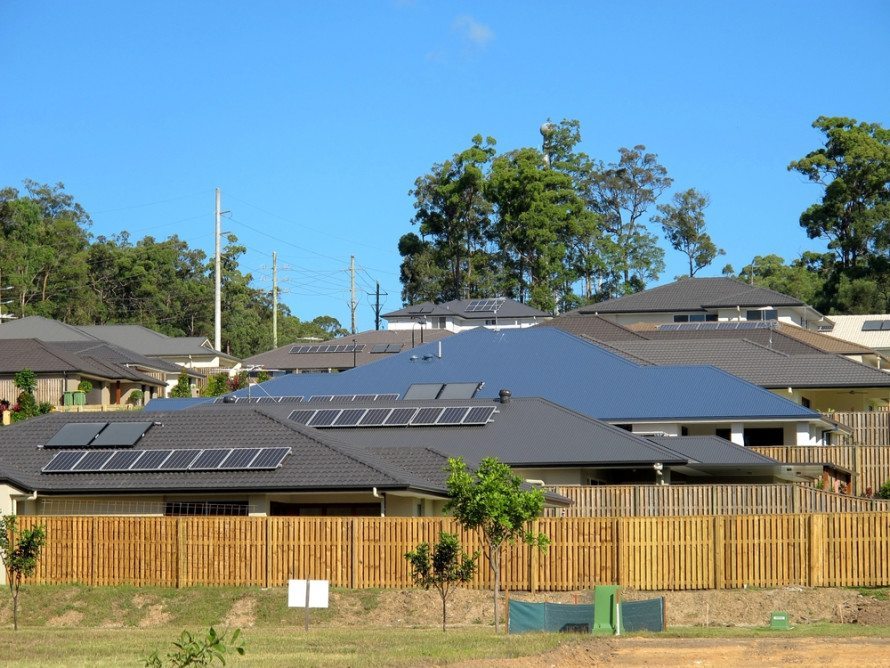
New South Wales solar households, already under the cloud of looming export tariffs, can expect to get paid less for the energy they export to the grid come July, with cuts of around 3 cents per kilowatt-hour being recommended.
In its latest solar feed-in tariff guide for 2024-25, NSW pricing regulator IPART has set a benchmark range for electricity retailers of between 4.9 to 6.3 c/kWh, down from 7.7c/kWh to 9.4c/kWh in 2023-24. This serves as a guideline only, and retailers are not obliged to apply it.
The time-of-day benchmark range has been set at 4.7 to 6.0 c/kWh between 6am and 3pm, jumping to 18.4 to 22c/kWh for the golden hour of between 6pm to 7pm.
IPART says it has once again recommended a cut to the FiT because wholesale electricity prices are being pushed down further, mostly by rooftop solar itself.
“Wholesale electricity prices have come down, particularly during the middle of the day when solar is exporting to the grid,” the regulator says.
“These prices have fallen mainly due to increasing solar penetration from rooftop solar and large-scale renewable projects. In addition, coal and gas prices have declined from their peak.
“This has resulted in lower forecast wholesale electricity costs for 2024-25 and a lower solar feed-in tariff
benchmark range.”
But what does it all mean in the context of the Sun Tax?
As IPART also notes, this is not any ordinary review period, with “significant changes” coming in the form of rooftop solar export charges, which will apply to customers who opt-in to energy plans with the new tariffs from July.
“These charges aim to send price signals to consumers about when it is beneficial (and not beneficial) for the grid to receive energy generated by distributed energy resources like solar panels,” IPART says.
“However, as these network charges are not yet in place, there is limited information about how these changes will affect the value of solar exports.
“Once these new network charging arrangements are in place, we will have a better understanding of how they will affect the costs of exporting solar and how they will interact with solar feed-in tariffs.”
To this end, IPART will conduct a second round of stakeholder consultation this coming September, once network charges for solar exports are in place, alongside a a full review of its methodology.
IPART says the review will focus on how retailers are incorporating network charges for solar exports and demand charges into their tariffs and whether the benchmark ranges need to be readjusted to account for this.
The regulator also wants to reassess how it forecasts the wholesale value of electricity, and whether its approach remains appropriate, as well as whether there are other avoided costs they should factor in when calculating solar FiTs.
The main message regulators and networks are keen to send to consumers is that the biggest benefit they can get from installing solar is by using it.
“Because the retail price of electricity is higher than a solar-feed tariff, the biggest benefit of solar panels is saving on your energy bill when you use solar electricity to power your home instead of buying this electricity from your retailer,” the 2024-25 report says.
This has been the message from the industry for some time now – and is one of the big arguments driving consumer uptake of home battery storage.
“A typical consumer in NSW can save more than $520 per year on their electricity bills by using the solar electricity they generate, instead of buying electricity from their retailer,” IPART says.
But as the footnote explains, a “typical customer” is assumed to have an annual electricity usage of 3,911 kWh and have a 5kW solar system. IPART also assumes they consume just 30% of the solar they generate.
Meanwhile, by IPARTs estimations a typical consumer can earn around $210 credit on their electricity bill
each year from feed-in tariffs – not an amount to be sneezed at.
The other statistic shared by IPART that suggests NSW solar households have a big task ahead of them in adjusting to solar export tariffs is in the table below.

The table clearly shows that nearly 90 per cent of all rooftop solar exports currently occur in the 6am-3pm time period, most of which falls into the 10am-3pm period network companies plan to charge for solar sent to the grid.
From 4pm through to 8pm, when network companies proposed to reward solar households for sending their power to the grid, a minuscule 3.4% of solar generated on rooftops is sent to the grid.

Sophie is editor of One Step Off The Grid and deputy editor of its sister site, Renew Economy. Sophie has been writing about clean energy for more than a decade.



